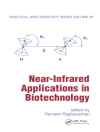Magnetic Resonance in Food Science is an authoritative summary of state-of the-art research contributions from the world’s leading scientists. Contributions from the 8th International Conference on the Applications of Magnetic Resonance in Food Science, 2006 are presented here with a foreword by the Editors. This important resource provides an overview of: * Food in the human body including MRI and metabonomics studies; * Food quality covering animal metabonomics, structure of food systems, food stability and authentication; * Food processing with emphasis on dynamic processes – including water migration and phase transformations; * New technologies, novel data analysis and exploitation which includes innovations in NMR methodologies, hardware and data analysis. The International Conference on the Applications of Magnetic Resonance in Food Science is the principle conference in the field and attracts contributions from internationally acknowledged experts from industry and academia. The 8th conference was opened with a lecture by Sir Peter Mansfield, Medicine Nobel Prize Laureate.
Jadual kandungan
NMR in foods: the industrial perspective;
Food in the Human Body;
Food in the Human Body;
Nutrimetabonomics: metabonomics in food science;
Metabolomics in food science: evaluating the impact of functional foods on the consumer;
1H NMR-based metabonomics applied in the elucidation of biochemical effects of consumption of whole grain cereals;
Low molecular weight metabolites in white muscle from cod (gadus morhua) and haddock (melanogrammus aeglefinus) analyzed by high resolution 1H NMR spectroscopy;
NMR of cell walls: a multi-scale approach;
MRI of a meat-related food system;
Use of MRI to probe the water proton mobility in soy and wheat breads;
Probing water migration and mobility during the ageing of bread;
High resolution NMR tools for the analysis of beer and wine;
Adulteration study in Brazilian honey by SNIF and 1H NMR;
The practical aspects of the quantitative analysis of solid-liquid systems using TD-NMR with low-field instruments;
Food Processing;
Influence of grain structural components on the drying of wheat: a magnetic resonance imaging study;
Dynamic visualisation of structural changes in cereal materials under high-moisture conditions using 3D MRI and XRT;
MRI study of polenta gelatinization during cooking;
The melting behaviour of lard in ‘Danish style’ liver pÔtÚ as measured by DSC and TD-NMR;
New Techniques and Novel Data Analysis and Exploitation;
Motional relativity and novel NMR sensors;
Molecular dynamics in sugar classes as revealed by recent dynamic solid-state NMR methods;
How much information is there in an NMR measurement?;
Advances in the magnetic resonance imaging of extracellular matrix of meat;
Separation of two dimensional diffusion and relaxation time distributions from oil/fat and moisture in food;
Dairy product authentication by 1H NMR spectroscopy in combination with different chemometric tools;
A ternary full-rank experimental design as viewed by chemometrics and NMR spectroscopy;
Phytic acid degradation by phytase as viewed by 31P NMR and multivariate curve resolution;
Mengenai Pengarang
Imad Farhat is the Global Technology Manager at Firmenich, one of the main Fragrance and Flavor multinationals. Dr Farhat has been involved in the applications of magnetic resonance in food sciences for more than 13 years, in particular during his research career at the Division of Food Sciences of the University of Nottingham where he was a Senior Lecturer in Food Physical Chemistry, and also in his current position. Peter Belton has more than 30 years academic and industrial experiences in magnetic resonance. He is a world authority in food spectroscopy having led the spectroscopy facility at the Institute of Food Research in Norwich where he held several leadership positions before joining the University of East Anglia where he holds a Chair in Chemistry. Professor Belton was President of the Institute of Food Science and Technology (2003-2005). Graham Webb was actively engaged in research in many aspects of NMR for more than 25 years both at University College London and the University of Surrey, where he became a Professor of Physical Chemistry. He is the editor of Annual Reports on NMR (since 1975) and The Royal Society of Chemistry Specialist Periodical Reports on NMR (since 1978).












